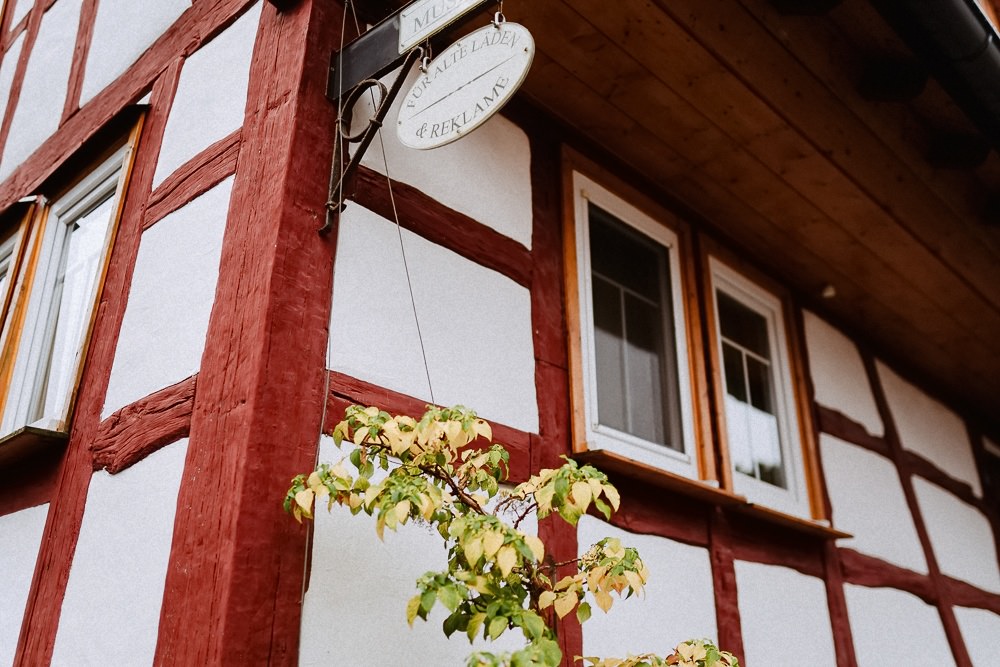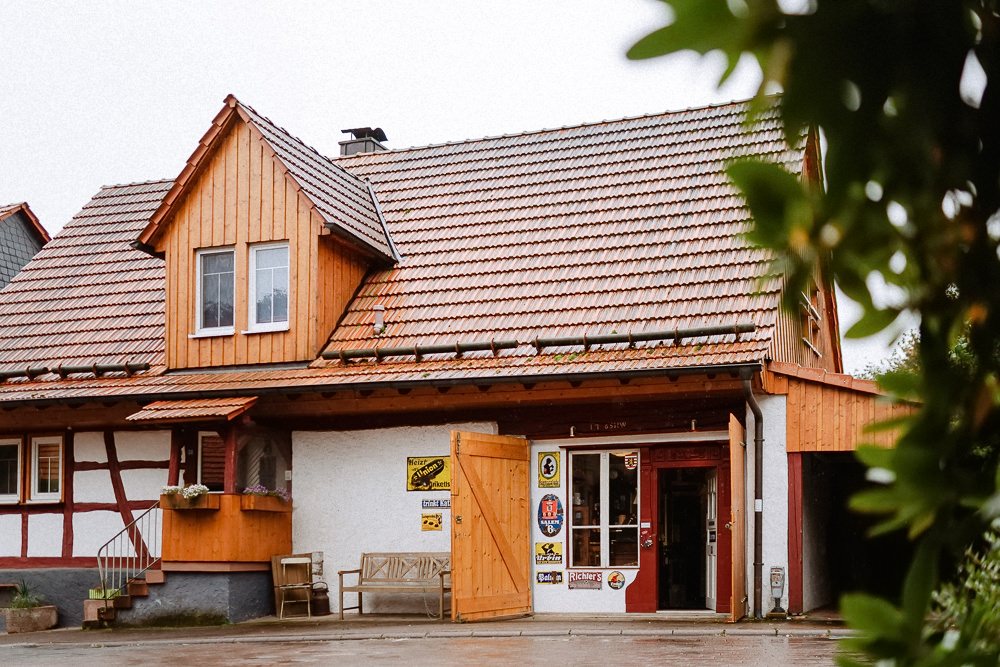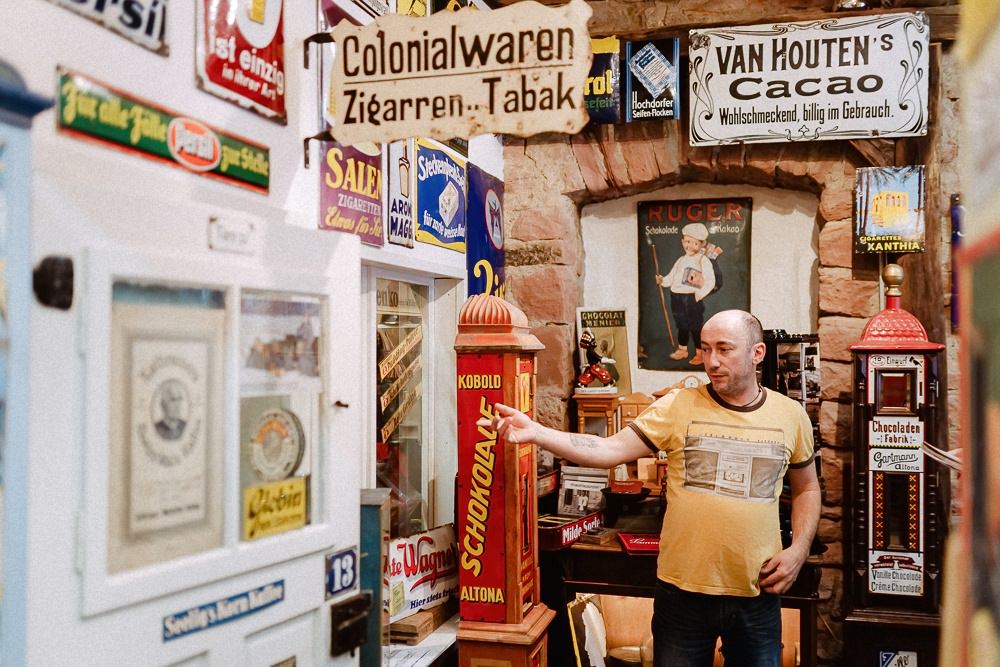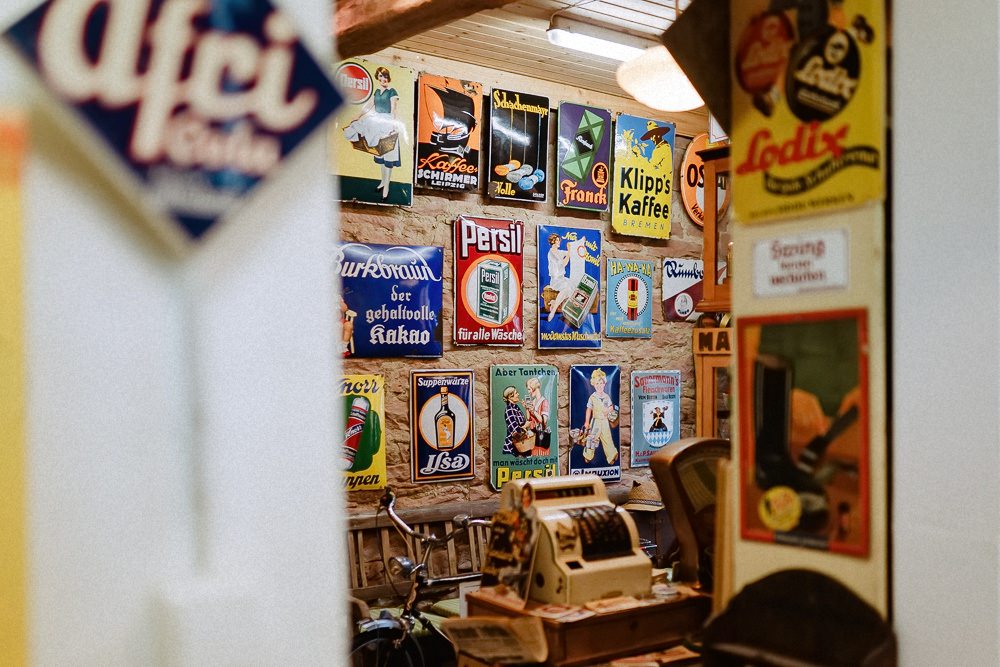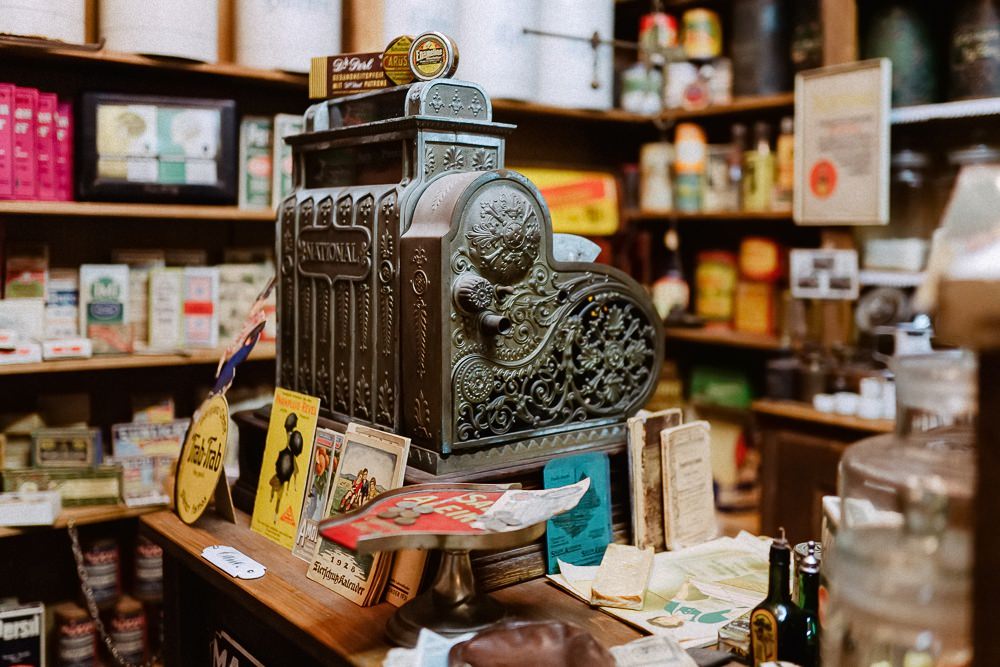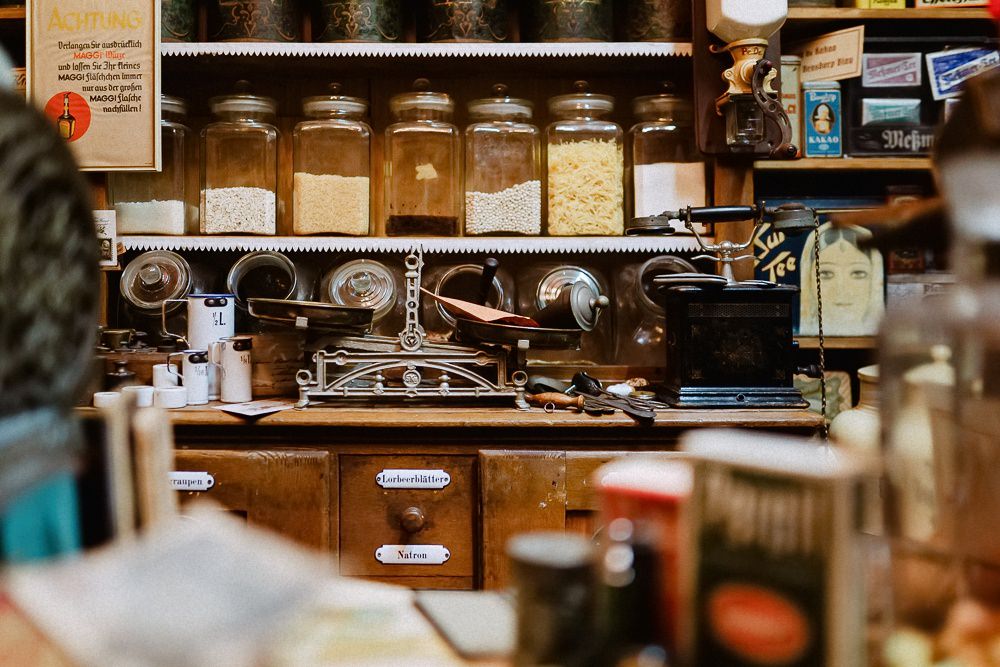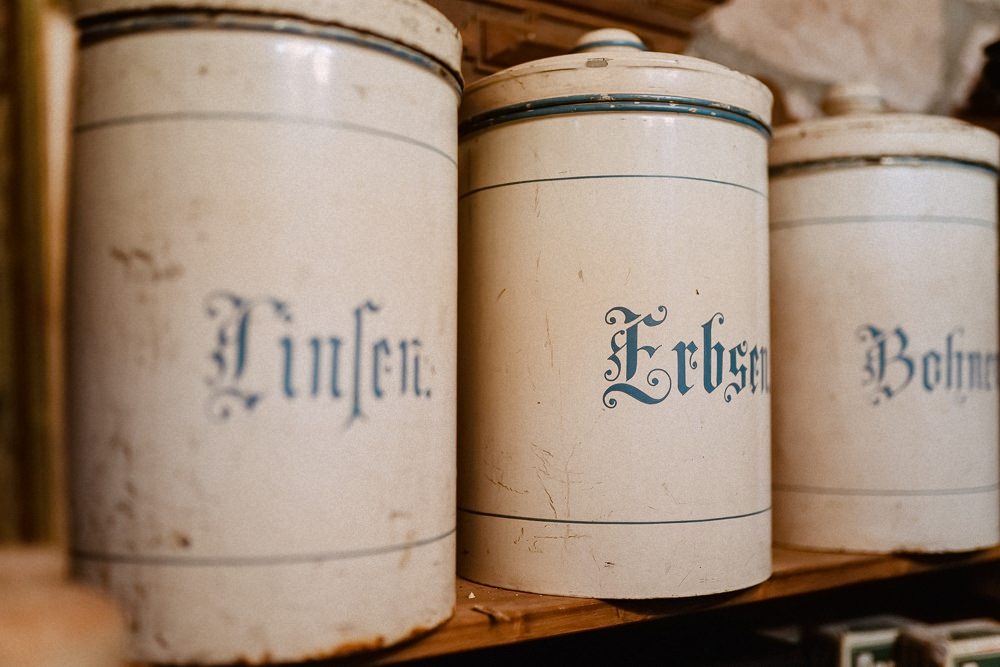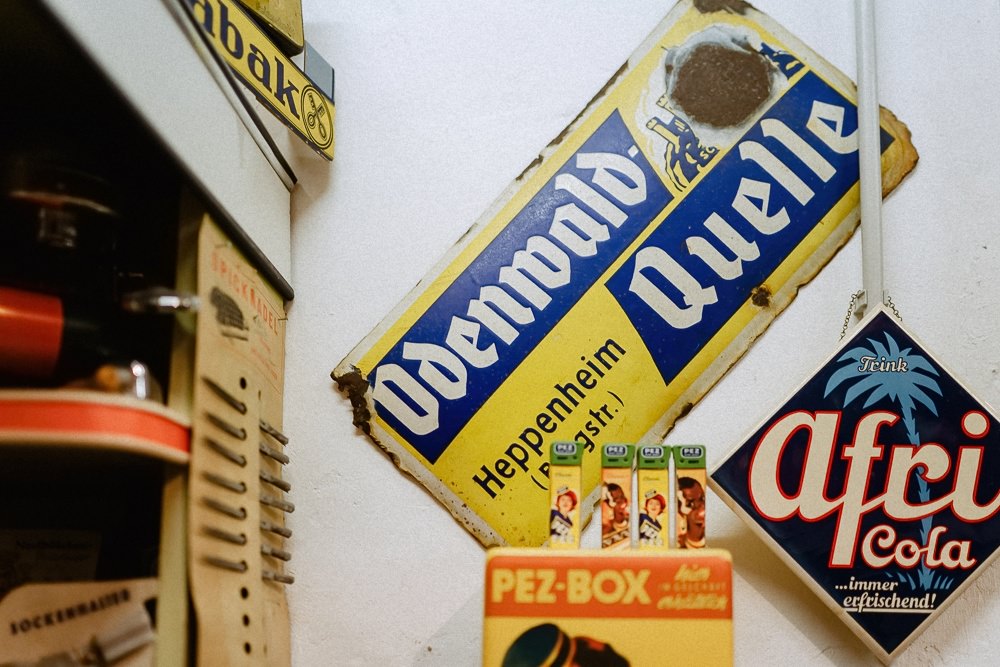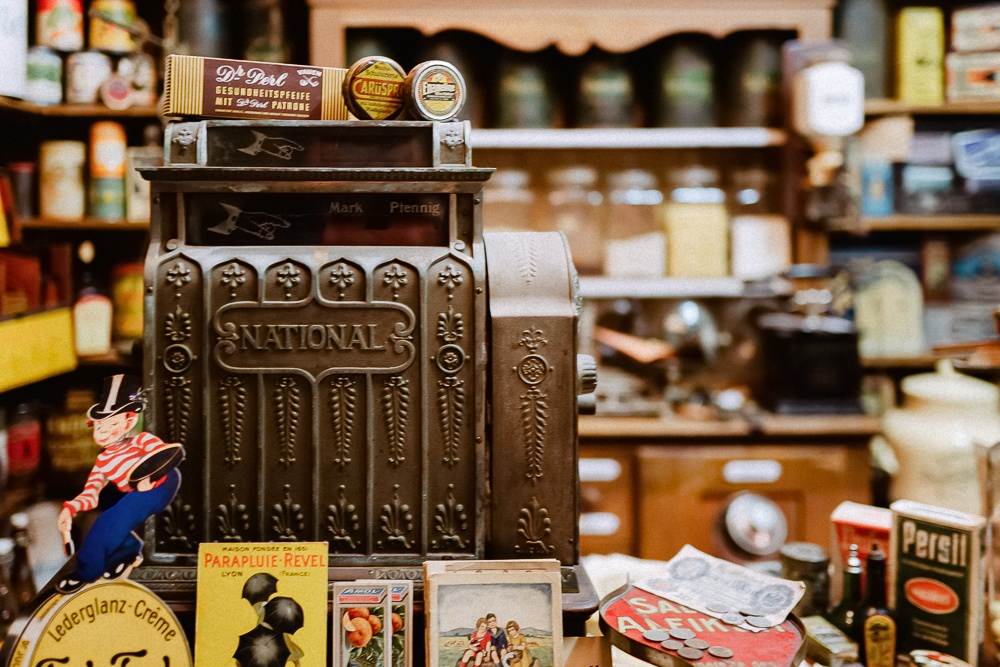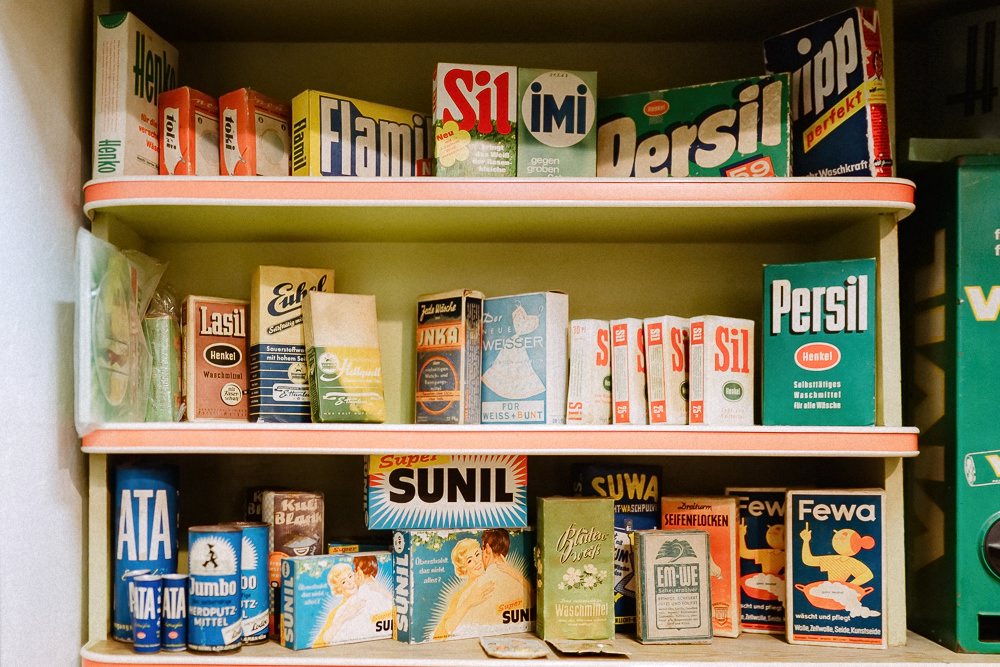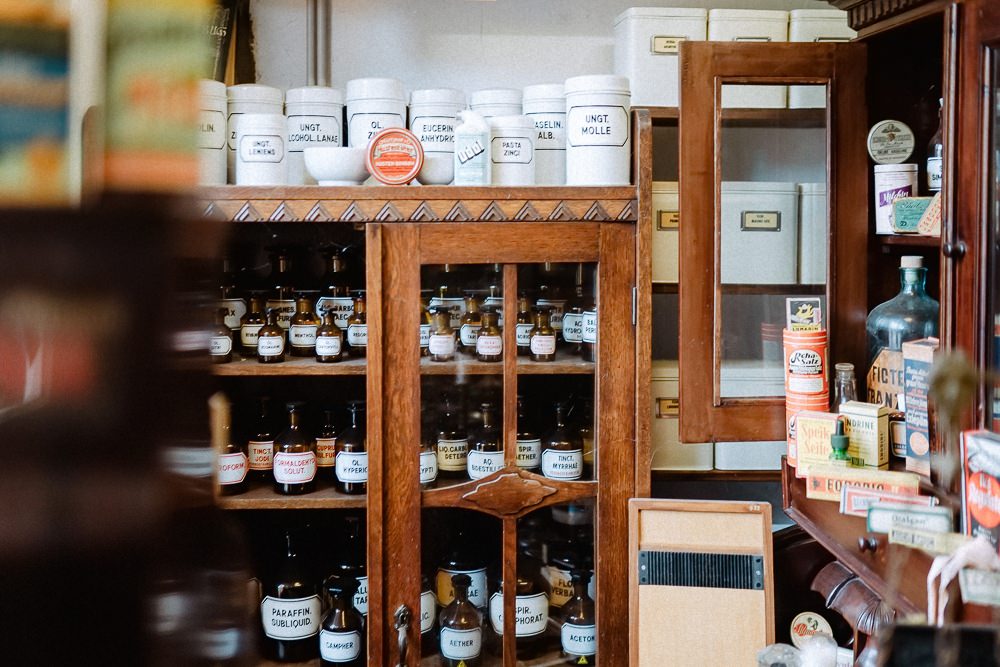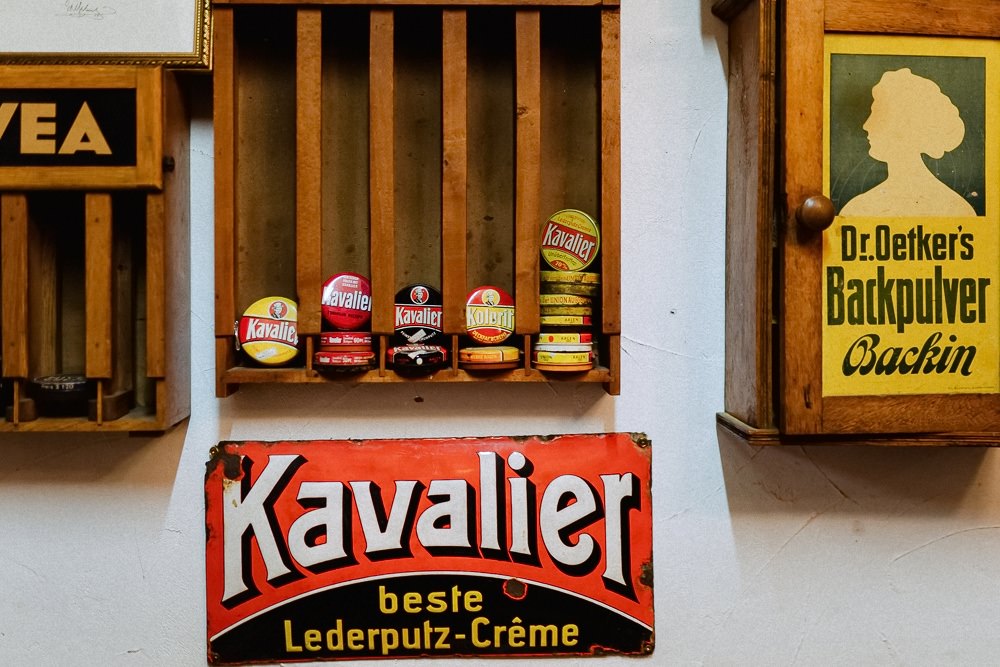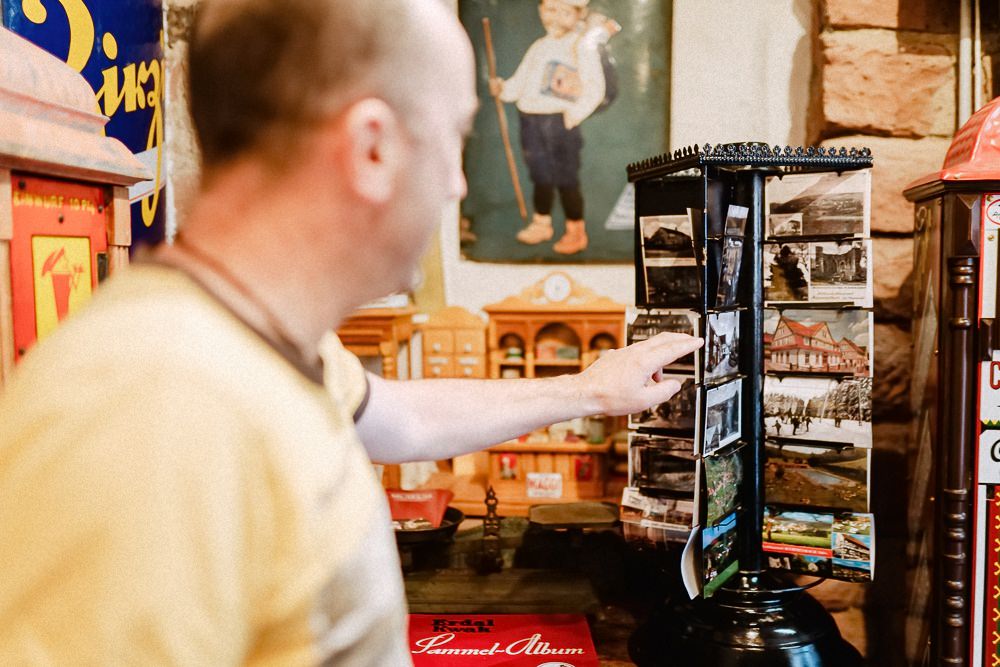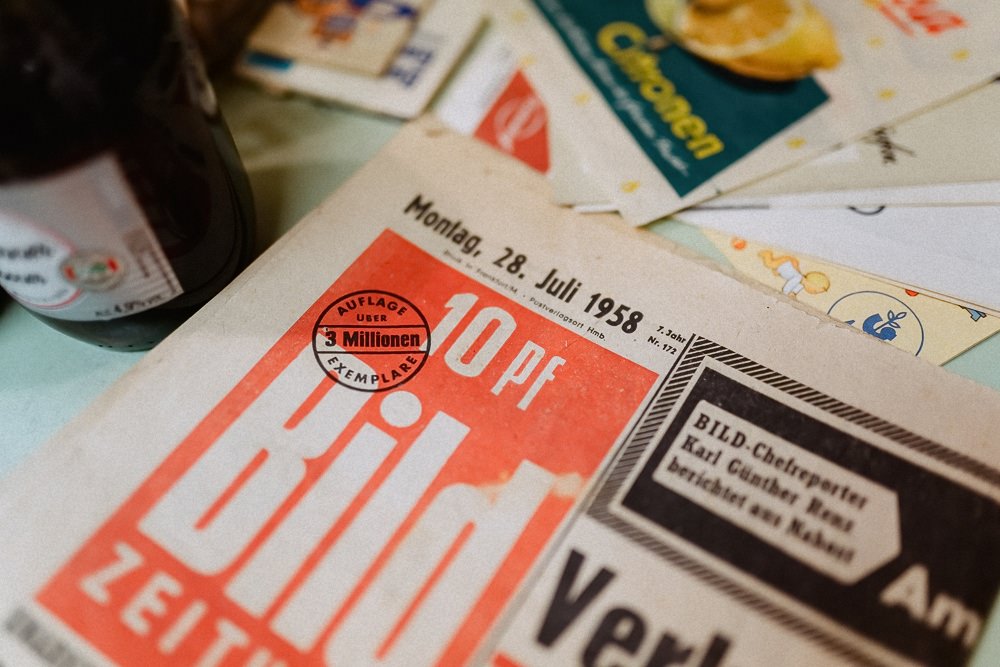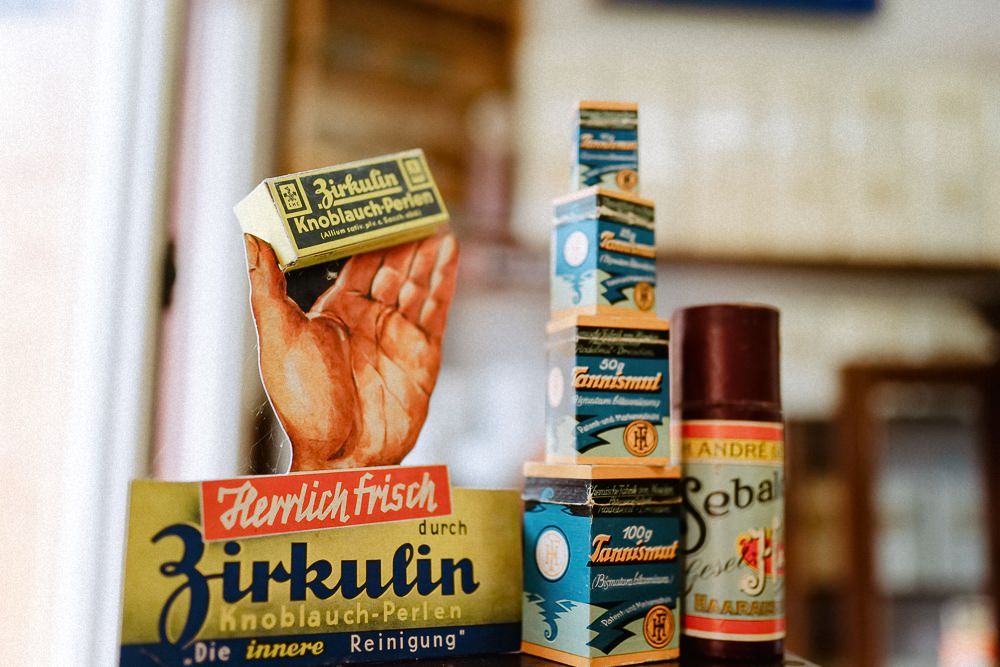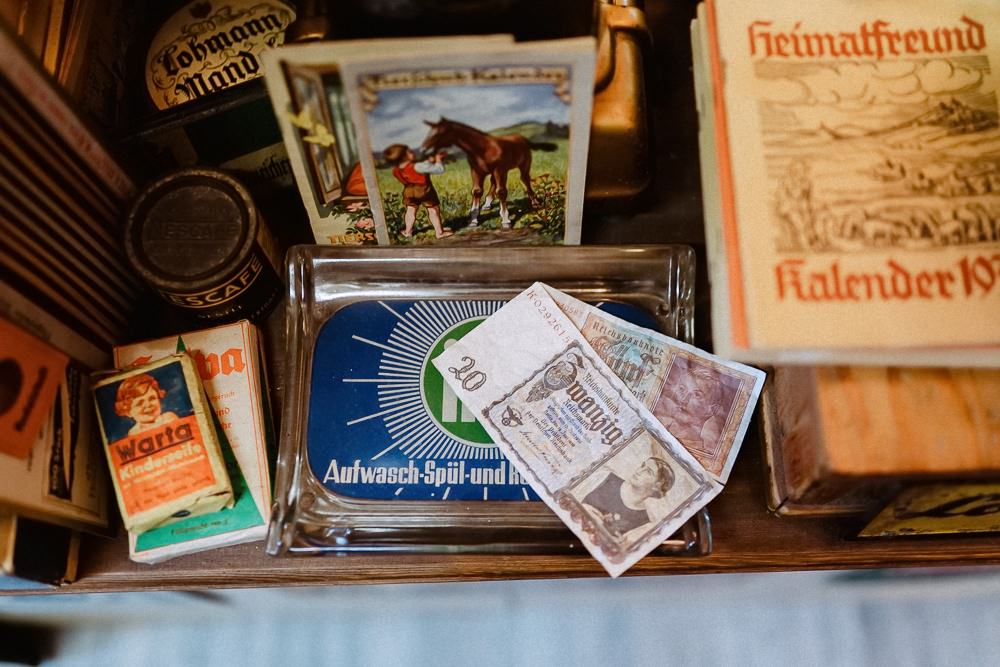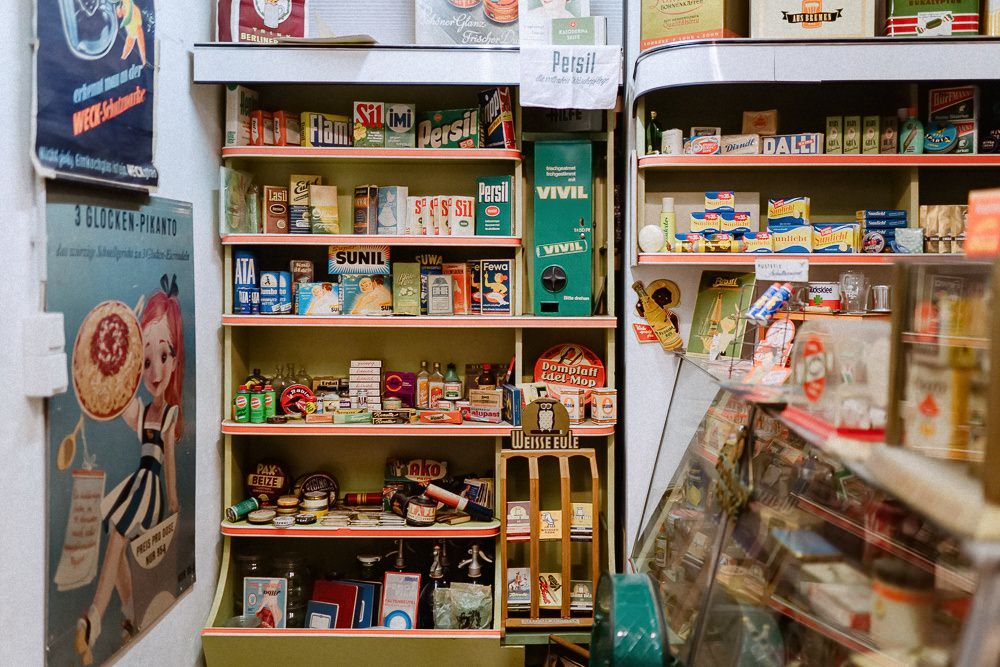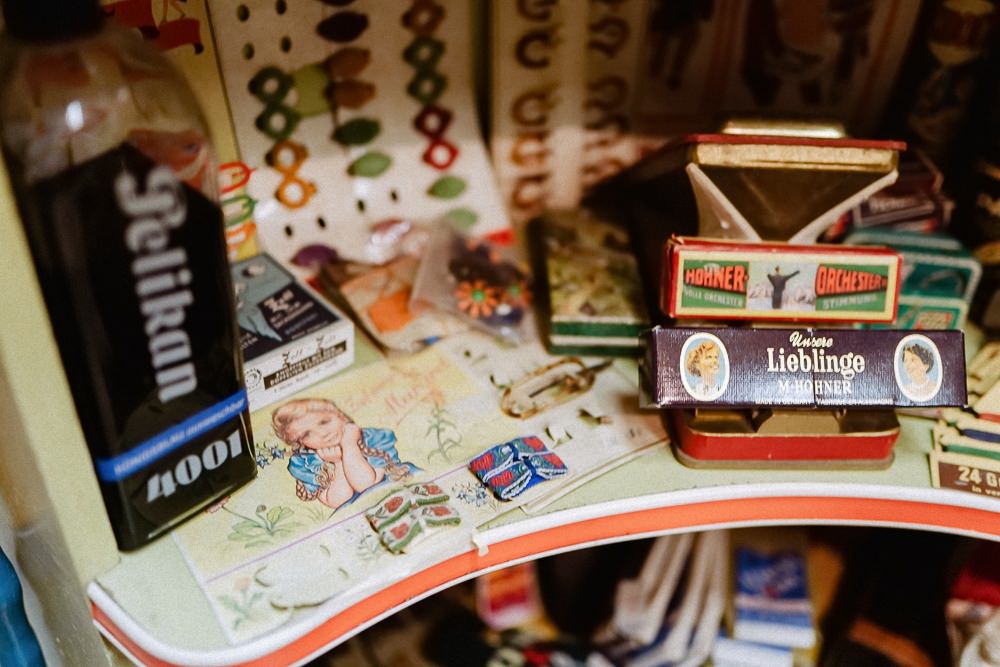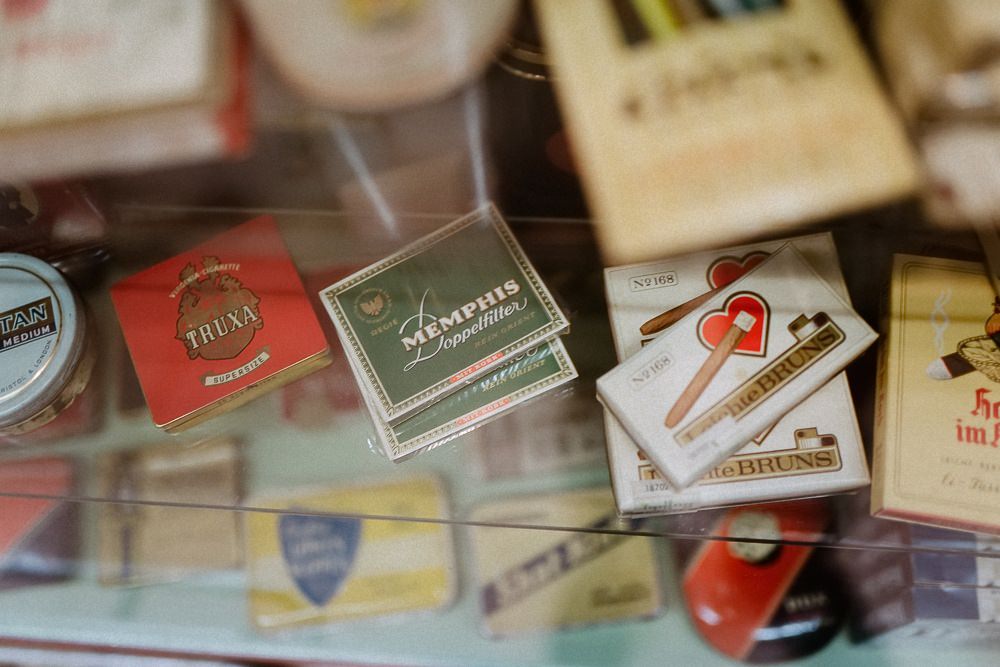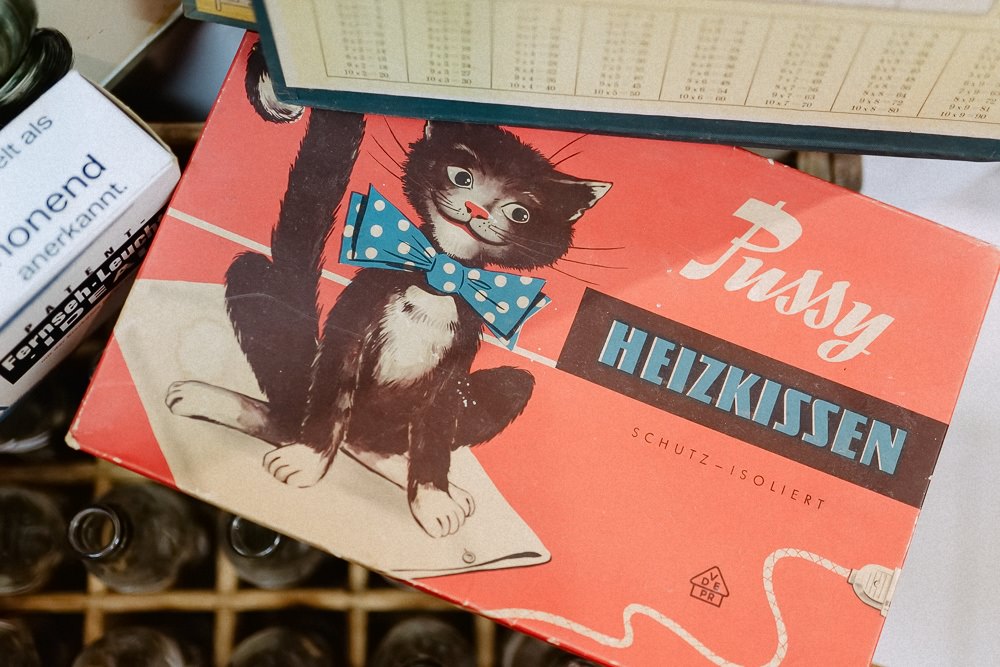In Peter Heiß’ Little Museum for Old Shops and Advertisements in Hammelbach visitors can go on a journey through time—from 1900 to the 1960s—of the culture of shopping and advertising. This is a story about a museum that was never intended to be, but nevertheless established its place in history, packed with dear memories.
Somehow, it’s his own memories that are on display here. Peter Heiß enters a small room that is filled with a corner shop, right up to the ceiling. It is the very model of a mom-and-pop store. There is a counter with a glass display case. Shelves in mint-green and tangerine. With a Pez-Box vending machine, Caro coffee drinks and with an endless range of Maggi products, soaps, cigars and elastic hair ties. Peter approaches the counter and squats down until his eyes peer just above it. “This is how I used to stand here as an eight-, nine-year-old lad asking for a stick of butter—or whatever it was my mum sent me here for.” He stands up again and breaks into a grin. “I also bought my first cigarette here.”
It’s actually the very sales counter at which Peter used to stand. Just that the counter used to be right in the middle of Hammelbach village—in an old Edeka shop that opened in 1952 and was ran by the owner’s family until it closed. “At the end, the lady was almost 90 years old and still worked at her shop every day.” Her daughter-in-law took over after her death and ran the shop for another few years until the family gave the business up. The storefront was to be renovated and the shop fittings became obsolete.
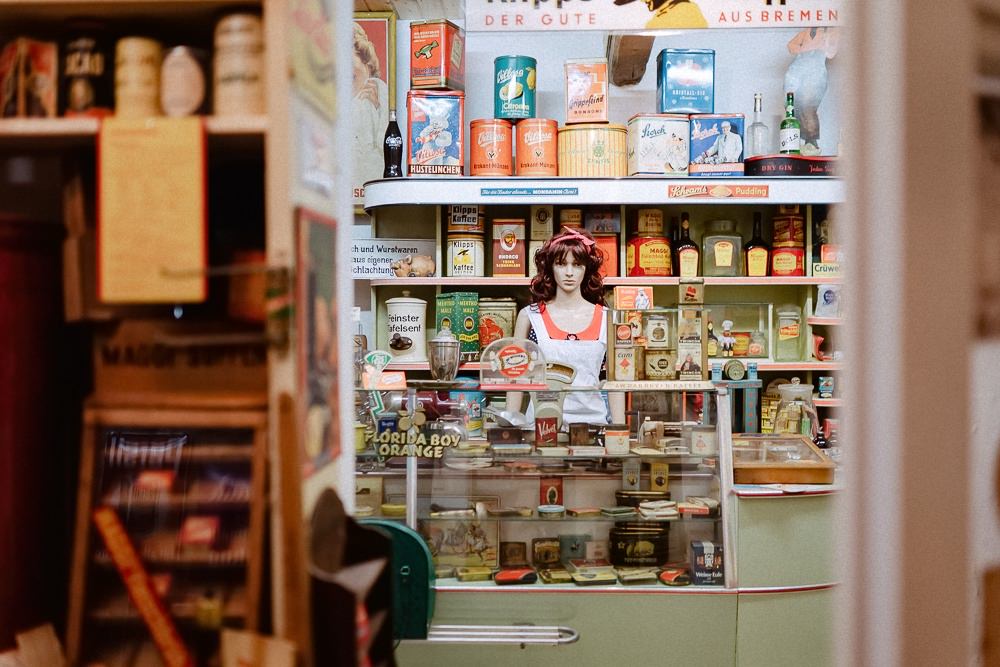
Today, they are part of Peter’s Little Museum for Old Shops and Advertisements (‘Kleines Museum für alte Läden und Reklame’). The family thought of Peter straight away when it was decided that the storefront had to be renovated. He is happy every time he realizes how he managed to preserve a bit of the village’s history here. “I simply like this beautiful old stuff,” he says, letting his gaze wander. The museum comprises several small rooms packed with “old stuff” and is a journey through time and through the culture of shopping and advertising. But this was not the initial intention.

